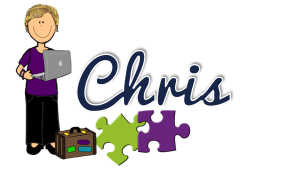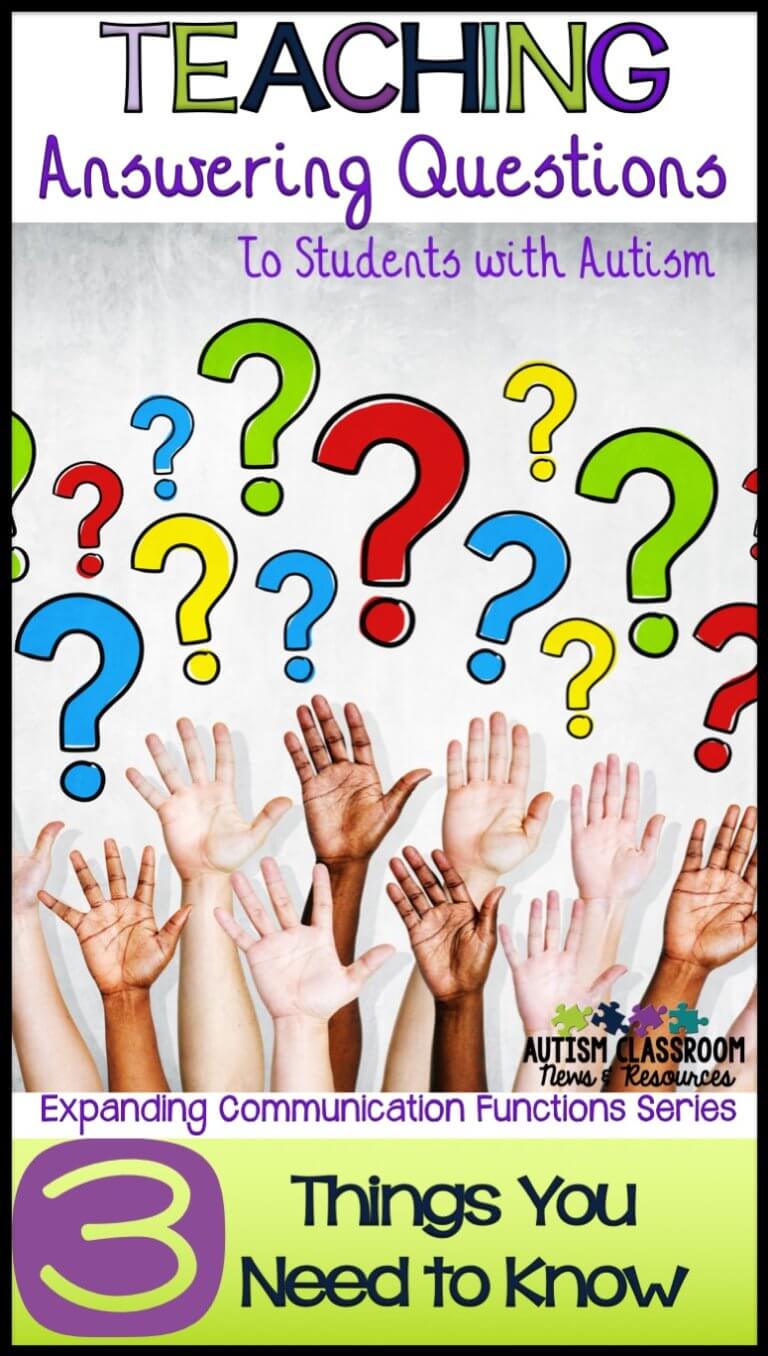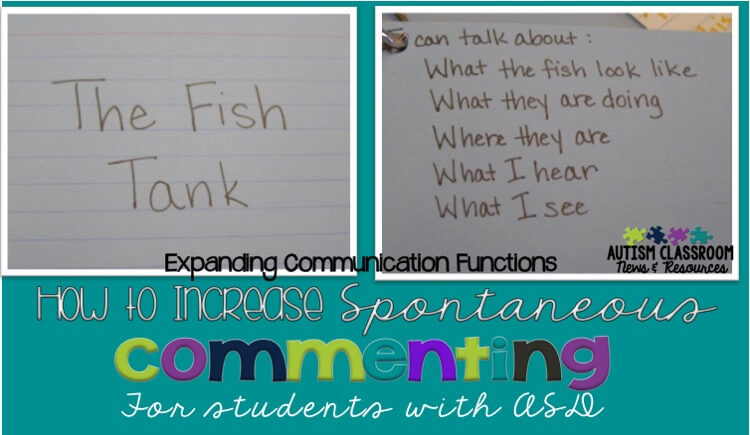Sharing is caring!
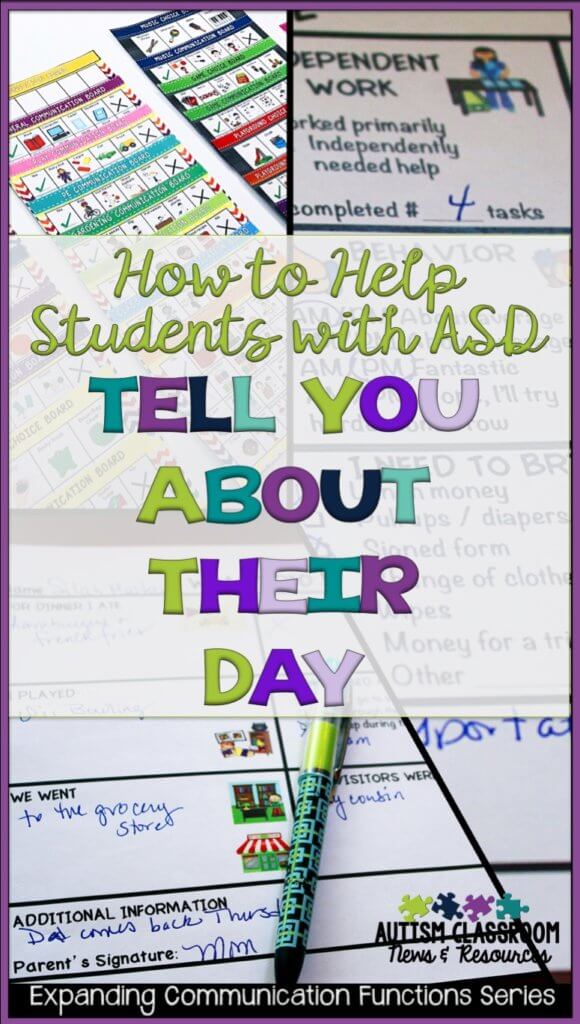
Ever asked one of your students about what they did at home last weekend and got a blank stare? Ever asked your own child with ASD about what happened at school? More interestingly, have you ever gotten an answer to those questions but then not been sure if it was accurate? Even our highly verbal kids have a hard time communicating about experiences. That include telling you about their trip to Disney, a fight they had with someone, or a field trip they took. Or it could be as simple as talking about what they had for lunch today. Some look at you with a blank stare and others tell you something but you either don’t know if it’s true or not (or sometimes you still don’t know what happened). This post will give you some Autism communication strategies to help your students with Autism spectrum disorder!
Why Is it So Hard?
To be able to communicate experiences is difficult for our kids for a ton or reasons. In order to tell you about their day, they have to:
- recall the events that happened
- sequence them in an order to tell you about them
- have the receptive and expressive vocabulary about the activity
- access the vocabulary about the activity
- formulate a narrative in order to relate the event
- regulate the emotions that might have been involved with the event
- …and I’m sure there are more.
And if they use augmentative communication, they have to have the vocabulary programmed to be able to talk about what happened.
We know that the families of our students struggle and want information about what happened today because many of our students CAN’T tell them when they get home. Similarly, as educators, we want to know what our students do at home so we can talk about it at school with adults and especially with peers. Let’s face it, much of our own communication daily consists of telling people about something that happened.
So What Can We Do About It?
Obviously there is a lot that goes into the type of narrative language that is needed to tell someone about an event or experience. I can’t possibly tell you all the steps to get from non-verbal communication and not responding to the question to being able to tell you all about a trip over vacation. But I can give you some tips of how you can structure your instruction of this incredibly important communication skill.
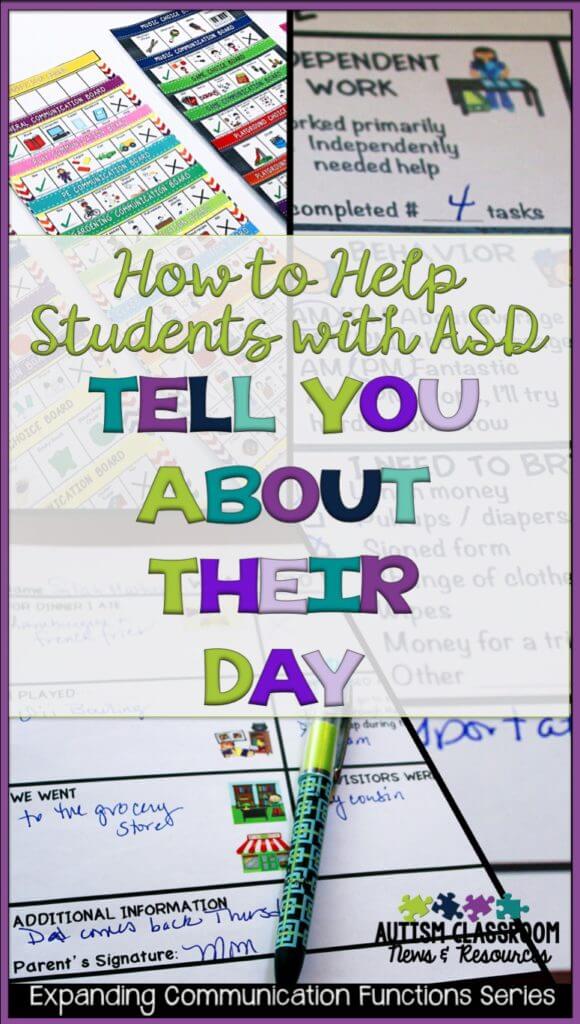 Start Small
Start Small
Don’t start with asking Sarah to tell you about her trip to Disney World. It’s just too much…too much time, too much information, too much emotion. Instead, the first step should be to ask her what she had for lunch today (20 minutes after she finished eating it). Practice the vocabulary during the event to make sure it’s fresh and then ask about it shortly after. This will make a significant difference in helping with communication challenges.
Start Concrete
Don’t start with feelings…start with facts. Our kids are better with facts. Good starter questions might be:
- What did you eat for lunch?
- Who were you playing with at recess?
- What games did you play with your friend?
- Who did you sit next to on the bus?
Start with Directed Questions
Make sure that you are starting with directed questions too. So, not “How was your bus ride?” but “Who sat next to you on the bus?” More specific questions are more likely to get a response. As kids get older and their communication improves, also think about using questions that require a specific answer other than “OK” or “Fine.” “Who did you sit next to on the field trip?” is going to get an answer you can build more conversation on. “How was the field trip?” to which the student says, “fine” makes it hard to talk more about it.
Program Chats Into the Day
Set up specific times that are natural opportunities to talk about something that happened. Two times that naturally come to mind are the beginning and the end of the day. I like to have a morning meeting at the start of the day and afternoon meeting before dismissal because it’s a great opportunity to talk about the events of the day as well as practice key skills like calendar.
At morning meeting, have each student communicate one thing he did at home (more on how to support that in a bit). Then at afternoon meeting, have them tell you one thing they did (or liked) during the school day. For more advanced students, the end of the day is a great day to review behavior systems and talk about behavior during the day (but only for students who can already relate events).
Another time to work on this type of communication is during journaling (for preschool we called them daybooks). This might take place at the beginning of the day or really at any time. Having students have structured ways to write about their day can help them relate it in verbal communication as well.
Use Visual Supports
Having chats set up ahead of time will allow you to make sure you regularly have access to any communication supports like communication boards or devices or just visual cues. There are essentially 3 types of supports you will need for this type of effective communication for our visual learners.
- Communication boards/devices programmed with the vocabulary
- Pictures to cue language and vocabulary–you can even have them use them to sequence events. This can include graphic organizers to sequence events or plan out what they want to say
- Information about the event the student is trying to talk about.
Communication Supports
Obviously we need to have communication supports for our students to expressively talk about an event. If you do community-based instruction or go on a field trip, make sure to teach the vocabulary involved in that activity so students can learn new words ahead of time to allow them more time to process information. Then make sure the vocabulary is available to them in either a field trip communication board, in their PECS or communication book, or programmed into their device. If you have a number of AAC users in the classroom, consider switches at morning meeting that you can program with the statements they might want to say and give them a choice of which to talk about.
Picture Cues
In addition to the expressive supports, many of our students will need visual tools or cues to remind them what to talk about. This can take a variety of forms.
For some students it might be picture symbols from visual schedules to discuss daily activities. One of the great things I love about morning and afternoon meetings is that they are times for us to review the picture schedule and what we did today. Not only is this good modeling of this type of communication by the teacher, but it also means the students are cued by the pictures from the schedule itself. The pictures are readily available and you can “prime the pump” of language skills by reviewing the schedule and then asking about something that happened today. This is the best way to use visuals to increase students use of language.
For others, photos of an event might be helpful. I love scrapbooking with students for a variety of reasons. One of those reasons is because while putting the pictures into a scrapbook, you can write and talk about the events that happened with natural picture cues to guide the conversation. It’s a great time to have students work on journaling the events that went on in the pictures. And finally the students just love to go back and look at them, so they become a great type of leisure reading that is age appropriate for all ages.
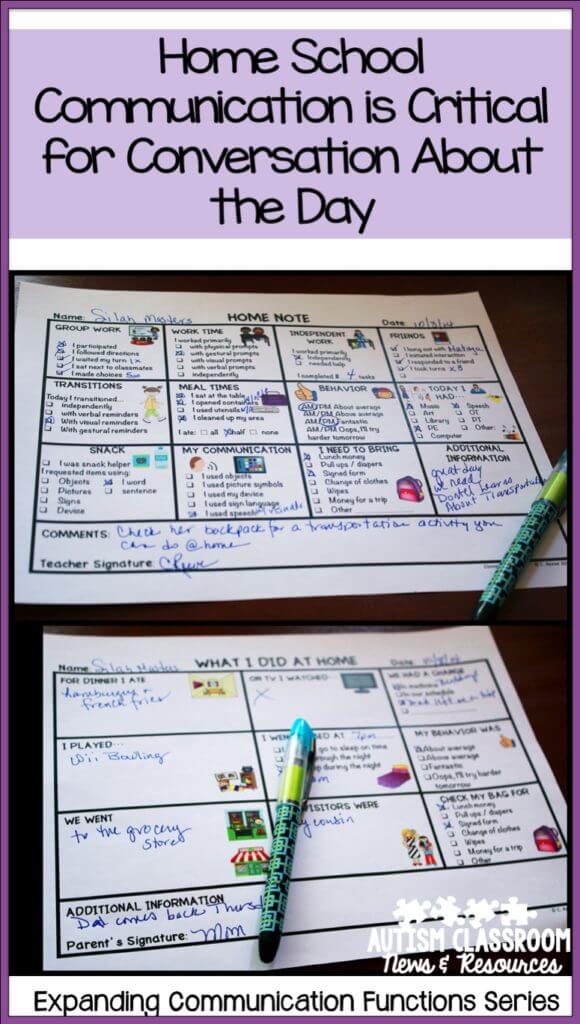 Information About Events
Information About Events
Finally it’s really hard to get better communication going about an event if you weren’t there. That’s the struggle many of our parents feel when their kids come home from school. It’s also the struggle we all face every morning when we ask what they did last night. It’s hard to support communication (or prompt for it) if you don’t know what they are trying to communicate about.
Consequently home-school communication really important for both sides to support this type of conversation. However, neither teachers nor parents have unlimited free time to write about everything that happens when the student is with them. I really like these home notes as a great way to send information back and forth about positive behavior, communication breakdowns, etc. Using these specific strategies will help you support your social communication difficulties and child’s communication skills.
- They are quick to fill out with specific common information and you can always add information about the art project today or what they did at music.
- They have a return form so that the school is sending home information about school and we are asking families to send information back about what happened at home.
- You can send them by email if you don’t have ready access to print / copies
- They have symbols on them that can match our schedules that we can use to cue information about the day
You can click on the picture to locate the home notes in my store in 3 sets for different ages.
Facebook Live
So, apparently I’m a social dork–I forgot about the Super Bowl, so you may have missed our Facebook Live chat tonight. However, someone on Instagram Live did say she would rather listen to me than GaGa. Unfortunately, Instagram Live deletes the whole thing at the end…so I can’t prove that! 🙂 Nonetheless, if you missed it, catch our discussion in the video below. And we’d love for you to come share ideas at our next Facebook Live on Sundays at 8 Eastern.
Yes I forgot about the Super Bowl. ??. So a quick chat tonight to talk about helping our students tell us about something they have done.
Posted by Autism Classroom News on Sunday, February 5, 2017
Until next time,
